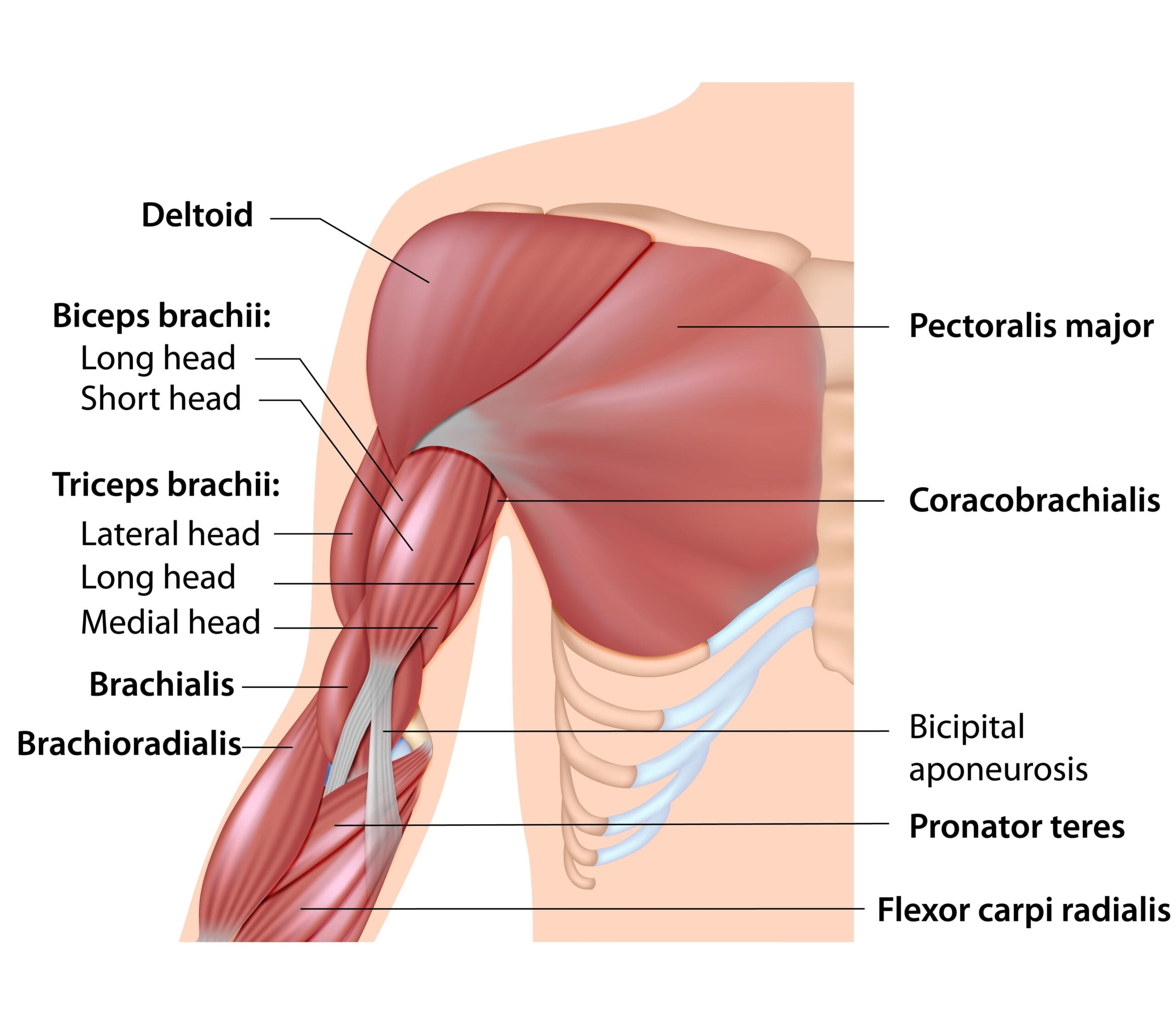Combat Arts Bicep Injuries Overview
Paulo Costa the Brazilian MMA fighter tore his biceps tendon which put him away for nine months. He sustained the injury in a previous fight and despite surgery, was scheduled to be out for at least a year.
The MMA fighter was due to challenge Israel Adesanya for the middleweight championship. Injury to the bicep tendon can take a long time to recover as is demonstrated by Paul Costa who has been sidelined for most of 2019.

Causes of Bicep Injury
Often, injuries to the bicep are due to hand to hand combat training. When the elbow is straightened against resistance, it can cause distal bicep tears; which is a tear of the tendon from the forearm bone (radius). The biceps are is responsible for strength and turning the forearm, such as to open doors or twist a screw driver.
Fighters who straighten the arm quickly with force can cause the tendon to simply come off the bone. Or when a fighter throws a hook, and it is suddenly blocked, causing the arm to straighten, which leans to tendon rupture or tear.
Symptoms of Bicep Injury

Types of Bicep Injuries
The most common injury to the biceps is the biceps tendon rupture. This could be the rupture of the proximal biceps tendon or the rupture of the distal biceps tendon. The tears could be partial or complete.

Related Bicep Injuries
Biceps Tendon Tear
The biceps tendon is composed of two heads. The long head from the scapula and the short head from the coracoid process. The tendon attaches to the radius. It acts as a strong supinator of the forearm and a weak flexor of the elbow. It also contributes to the glenohumeral joint and makes the joint stable. It is usually seen in the dominant limb.
Symptoms of Bicep Tendon Tear

Causes of Bicep Tendon Tear
In MMA, the rupture of the distal biceps is due to excessive eccentric force. This is more so when the arm changes to extension from flexion. Throwing jabs, hooks and armbars are all moves where this motion is common.
The rupture of the proximal biceps rupture is more often due to repetitive injury and associated with rotator cuff issues. Certain risk factors like smoking, use of corticosteroids and anabolic steroids, and overuse tend to precipitate the biceps tendon tears. The use of quinolones (antibiotics), presence of diabetes, lupus, and chronic kidney disease can also cause biceps tendon to rupture.
To learn how Biceps tendon tears is diagnosed Click Here
Common Bicep Injuries
Common bicep injuries like sprains and tendinopathies are explained further in our Common Injuries section.
Bicep Injury Diagnosis
The diagnosis of a biceps tendon tear is often clinical. If there are partial ruptures, then imaging is helpful. To diagnose the biceps tendon tear, three criteria are needed. The presence of trauma, visible signs of biceps retraction or the Popeye deformity, and the weak elbow flexion with weak supination.
Focusing on Arm Strength Can Help Prevent & Manage Bicep Injuries
Subscribe for More Advice!
Injury Specific Diagnosis
Biceps Tendon Tear
Physical Exam
On the physical exam, many fighters will display, ecchymosis, swelling, and tenderness in the antecubital fossa. The doctors will palpate the upper arm and find a defect in the distal tendon. The muscle may be retracted. The hook test can identify the absence of the biceps tendon distally.
Here the doctor will position the affected arm in 90? of flexion and then supinates the arm. Then they will hook the tendon under the skin. If the distal biceps tendon is intact it will allow the examiner to hook the index finger under the biceps tendon.
This test is very specific and sensitive to diagnose the distal biceps tear. For those with proximal tendon rupture, pain and ecchymosis extending up to the elbow is visible. However, the doctor will examine the shoulder muscles and nerves as rotator cuff pathology is common with these tears.

Imaging
The best test here is the ultrasound. Ultrasound is a cheap, noninvasive way to see the absence of the tendon. Plain films are not helpful. X-rays are done to rule out other bone pathology or verify radial tuberosity hypertrophy. It can also confirm an occasional avulsion fracture of the tuberosity if present. MRI is not necessary for diagnosis. It does confirm whether the tear is complete or partial. An MRI can also confirm the degree of retraction and whether the tear is in the muscle or the tendon.
Lab Tests
Lab tests are not necessary for diagnosing biceps tendon tears. The diagnosis is mostly clinical.
To learn how Biceps tendon tears are diagnosed Click Here.
Common Diagnoses
Biceps injuries are diagnosed clinically and occasionally require imaging. Find out more these diagnostic tests from our Common Diagnoses section.
Bicep Injury Treatment
The treatment of the biceps tendon rupture depends entirely on the type of rupture and site of rupture. Treatment is lengthy and requires a long rehabilitation program. Chronic biceps injuries that are present for longer than 4 weeks can complicate the treatment process. The biceps tendon can retract significantly if left untreated and so it needs prompt diagnosis and treatment.
Injury Specific Treatment
Biceps Tendon Tear
Emergency
Once a fighter presents to the ED, the diagnosis is made after a clinical exam. Seek orthopedic consult immediately. Distal biceps tear should see orthopedic surgeons as soon as possible. Any delay in treatment can cause the tendon to proximally retract significantly.
Medical
The treatment of biceps tendon rupture depends on the site of the rupture. The rupture of the proximal biceps tendon or long head requires non-surgical treatment. There will be some residual cosmetic deformity and intermittent biceps muscle cramps. Most fighters opt for surgical intervention via biceps tenodesis. It involves cutting the biceps tendon and reattaching it to the humerus.
Subpectoral tenodesis is the preferred method to do this. Using arthroscopy, new implants like interference screws and bio-absorbable suture anchors can secure the tendon in the subpectoral space.

The rupture of the distal biceps tendon requires surgery to allow quicker return to MMA. To regain maximal forearm supination, full strength, and relieve pain in the antecubital fossa, surgery is advocated. The surgical repair of the distal biceps tendon can be done via two methods.
The simple and more efficient method is the non-anatomic approach. It sutures the ruptured biceps tendon to the brachialis. It helps regain flexion strength. The other anatomic approach reinserts the ruptured tendon on the radius. This restores the strength of elbow flexion and forearm supination slightly better than the former method.
Two surgical techniques exist to fix the torn distal biceps tendon. The anterior single-incision technique where the incision is made over the elbow, at the antecubital fossa. This procedure can injure the lateral antebrachial cutaneous nerve. The other technique is the dual-incision technique. One incision is made over the antecubital fossa and a second one behind the elbow. The dual-incision technique is more commonly used for better repair.
Home
Following surgery, there are different rehabilitation protocols. Usually, limited active or passive elbow flexion and supination are advised. This is suggested in the early postoperative period. Passive shoulder flexion, abduction, internal and external rotation exercises are started with a sling on. Later, the rehabilitation can include strengthening exercise of the shoulder and wrist. Sling immobilization is advised for 10 days.
Common Treatments
Biceps injuries are treated using physical therapy, medications, and surgery. Read more about them in our Common Treatments section.
